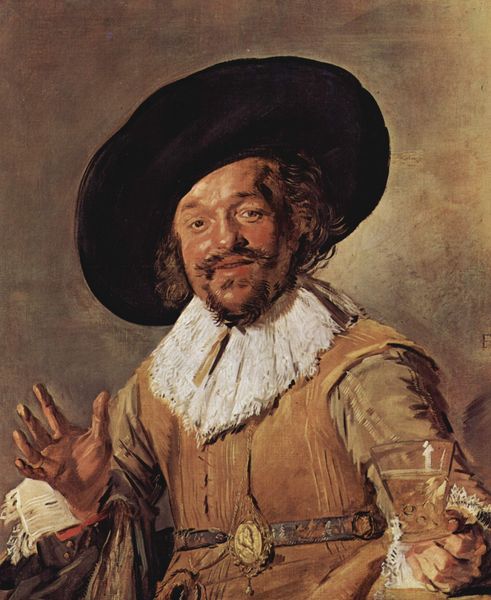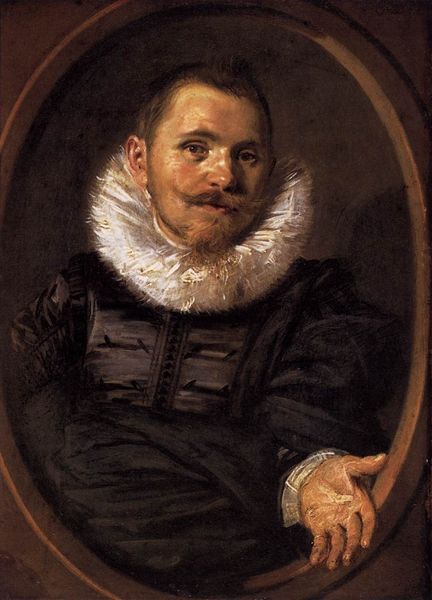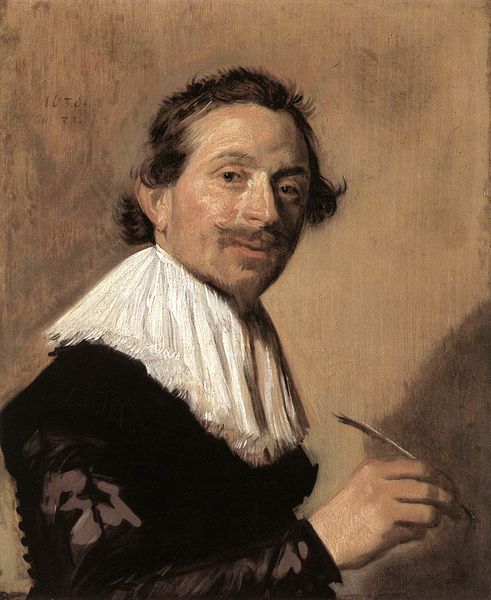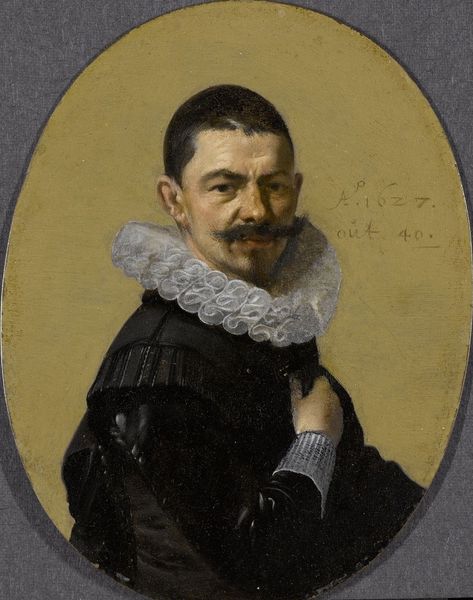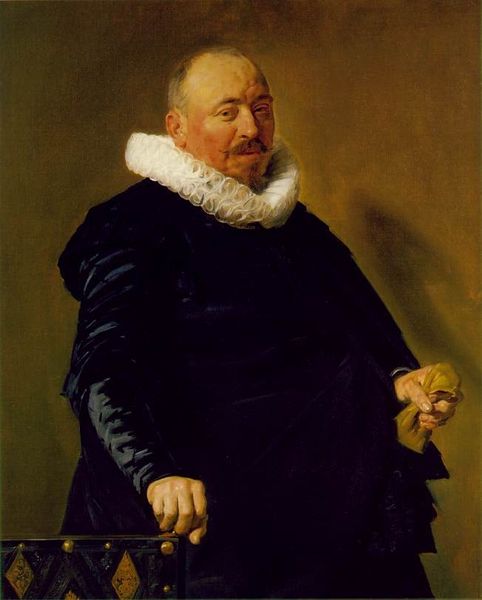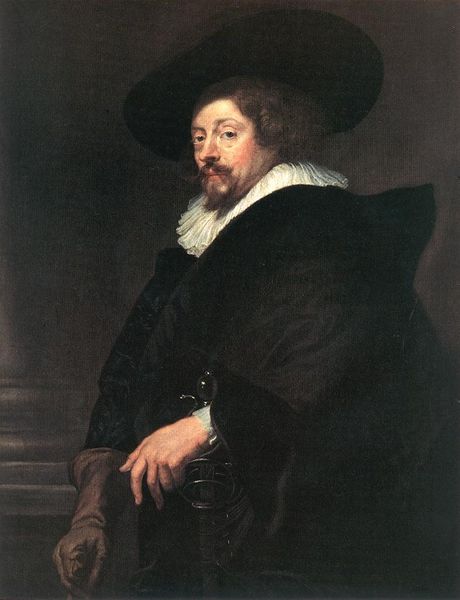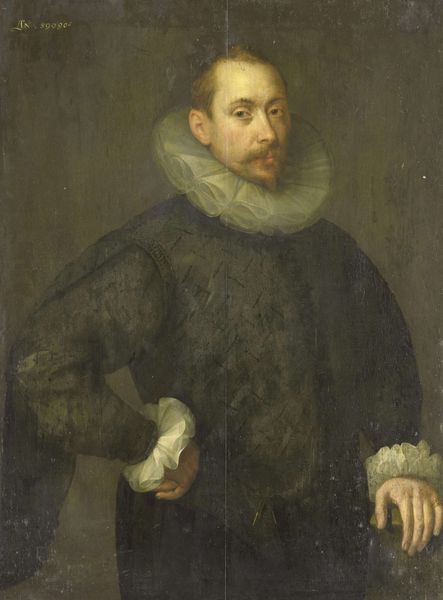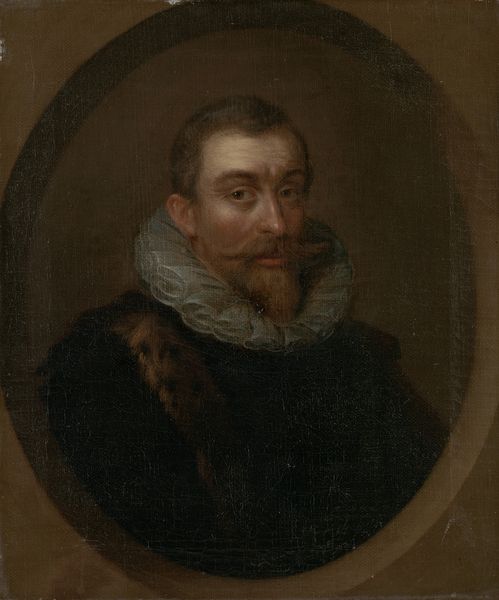
painting, oil-paint
#
portrait
#
baroque
#
painting
#
oil-paint
#
figuration
Dimensions: 21.3 x 19.7 cm
Copyright: Public domain
Editor: Here we have Frans Hals's "Portrait of Isaac Abrahamsz," painted in 1635. It's an oil painting with a figural subject. The brushwork feels very loose and lively. What stands out to you about this piece? Curator: What fascinates me is how Hals used oil paint, a relatively new medium at the time, to not just depict Isaac but to embody the mercantile spirit of the Dutch Golden Age. The materiality of paint itself – the cost, the pigment, the labor to grind and mix it – all speaks to a burgeoning capitalist system. Editor: That’s interesting, I hadn't thought about the economics of the materials. How does that connect to the portrait specifically? Curator: Consider the collar. It appears almost casually rendered, but its very form speaks volumes about labor and consumption. Linen production was a massive industry. Every detail, seemingly simple, actually represents an interconnected web of making, trading and accumulation. It’s the texture and build-up of the pigment itself that gives us so much detail. Editor: So, even the quick brushstrokes we see are communicating a complex narrative of production and trade? Curator: Precisely. Hals isn't just showing us a man; he's showing us the products and profits of labor, and the expanding networks of global commerce within 17th century Netherlands. He is subtly placing Issac within that economy and culture through his material choices. What does this portrait tell you about wealth and class in this specific cultural environment? Editor: Thinking about the materials and how they connect to the subject gives me a whole new appreciation for Hals's skill and intention. It's like reading a portrait through the lens of its production. Curator: Exactly. This portrait encourages us to contemplate how material culture shapes our understanding of identity, power and artistry in the 17th century. It reveals social realities beyond appearances.
Comments
No comments
Be the first to comment and join the conversation on the ultimate creative platform.
